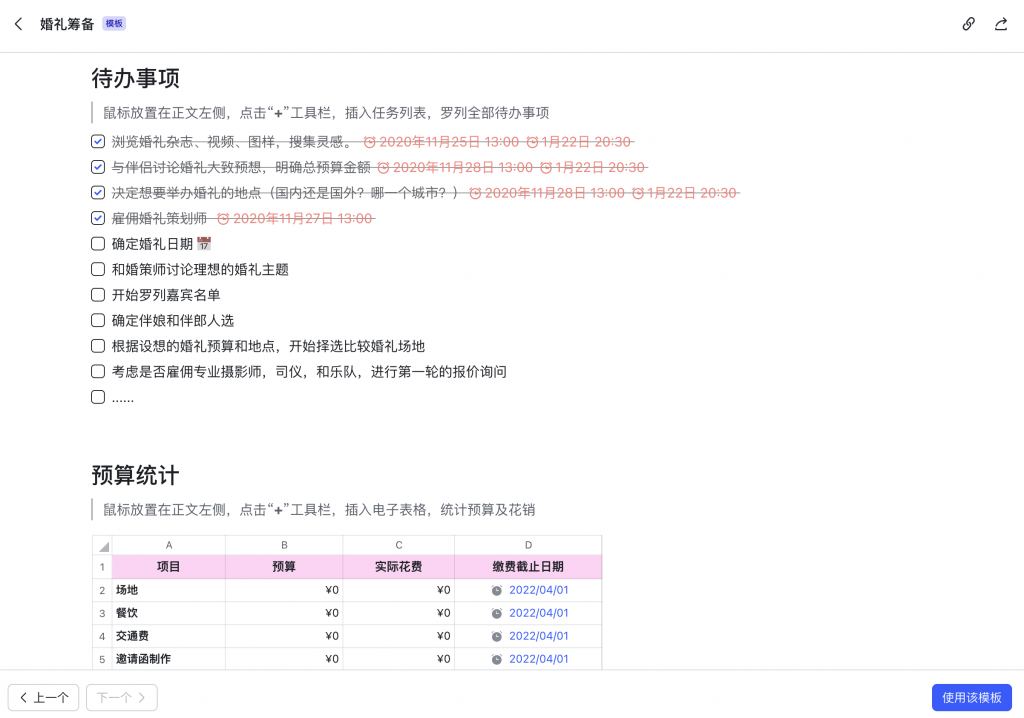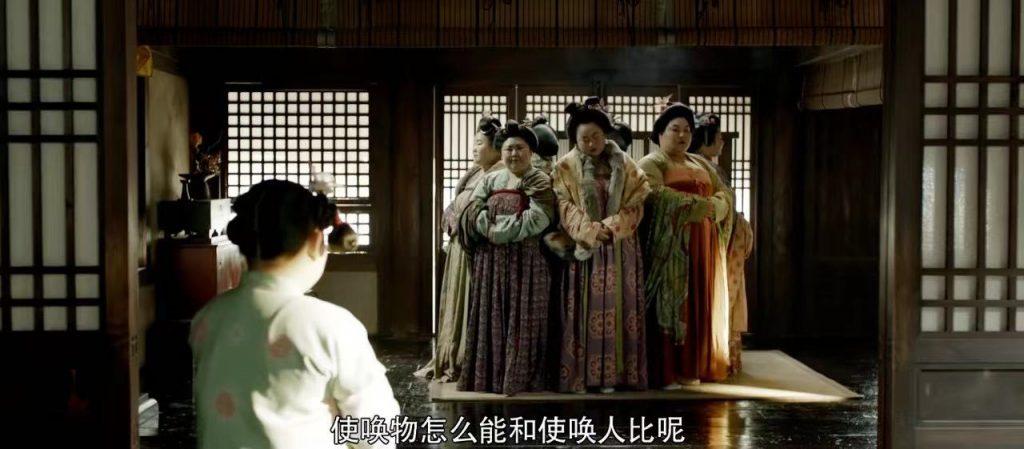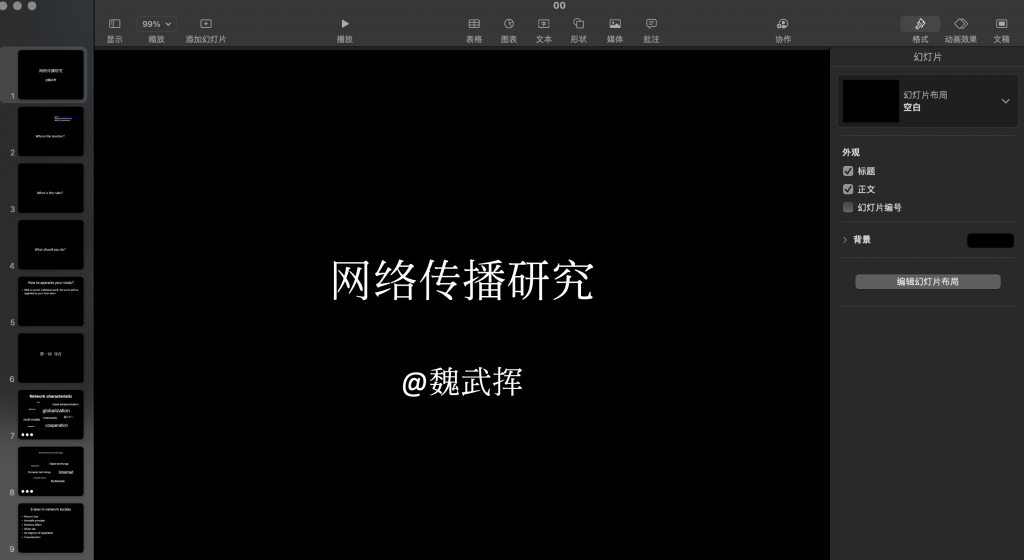Original link: http://weiwuhui.com/8653.html
Recommend an article:
Well said, I recommend reading it first.
I can’t get enough of it, so I continued with a few words.
Tell two stories.
one
first story.
Last year, a student interned in Feishu. One of her important tasks was to participate in the development of the college market and encourage college teachers to use Feishu for teaching activities.
The students and I have a good relationship, so come to develop my head. Of course, there is no problem, because for two years, I have always used Feishu documents as word, and I have a sense of closeness.
I have a class that uses the so-called “flipped classroom” teaching method. Speaking of human words means that each class is taught by a group of students, demonstrates PPT, and analyzes and preaches a case of Internet and new media. After the talk, I moderated the question-and-answer discussion and introduced the next case for the next group to work on.
Since it is a group work, there is naturally a “collaboration” part. Some of the groups are quite serious and will have discussions with me before the presentation day – I certainly won’t revise their assignments verbatim, but it’s entirely possible to put a question mark on a slide and write two words .
So, it sounds like Feishu is a good fit.
But the core point here is: PPT.
Feishu’s PPT is the WPS function called. In my eyes, it is relatively simple, and it belongs to the level of “I finally have one” and “it’s not impossible to use”.
So I complained to the student: I am afraid that such a PPT function cannot meet the needs.
The reply I got was pretty good: Teacher, PPT is outdated, who still uses this now?
Think of Feishu’s slogan: advanced enterprises use Feishu, I think the logic is self-consistent.
Then if you say, Feishu may have a more sense of mission, and want to help companies to be more advanced. Then I think this is the attitude of making products. Products should serve users, not educate users.
two
Second story.
At a dinner party, Liu Run put forward a point: Feishu is not right.
It is said that this view was not even thought of by the people in Feishu, and it was summed up by Liu Run afterwards, and it was quite reasonable.
An enterprise is actually an organization that “does things right”, that is, to gather a group of people to accomplish large and small things. In this process, people are indeed “tools”.
On the issue of collaboration, Feishu revolves around the goal of collaboration, that is, around “things”. A document is not essentially a word, or an excel, nor a ppt, but “one thing”. The so-called “document template” is the core process and methodology to accomplish this.
This is the “wedding preparation” template provided by Feishu – well, yes, it does provide this template. Obviously, it breaks the big event of the wedding into a number of small things. In every little thing, of course, you can choose to do it yourself, or you can pull someone else to do it together. Collaboration, that’s what happened.
People serve things. If you have something to call someone, you can kneel when you have nothing to do. This is indeed in line with how a business should function. This design philosophy is OKR-style, not KPI-style—the latter is people-focused.
Feishu’s design concept of treating people as tools has reduced the burden on people as a result. And this is exactly what Liu Fei mentioned in that article: the boss may not like it.
three
A scene from the TV series “Twelve Hours in Chang’an”.
Yuan Zai, a small official who was so poor that he didn’t even know where dinner was, spent his money to gather a group of fat women and gather himself in the middle, forming an airtight situation. His way of infusing himself with incense is very special, and the maid doesn’t understand it very much. Obviously you can hide in a hut, or give yourself the clothes to smoke, why use the more expensive method of seven or eight people?
Won Jae’s answer perfectly expresses the innermost feelings of many managers today:
How can a summoner be compared with a summoner?
As far as incense is concerned, Feishu can obviously do it in the most economical and direct way. Yuan Zai can do it on his own, or he can bring in a maid to collaborate. But for many business managers, this seems to be the best solution for this matter, not for people. Especially for myself, it’s not optimal.
Quite a lot of managers, even including real bosses, will use how many people they manage instead of what they do to highlight their management authority.
It’s weird, but very human. In fact, even the Feishu team themselves, I am afraid they have this idea: Feishu has more than 7,000 employees, Dingding only has more than 1,000 people, and there are more than 500 people on WeChat.
How can a summoner be compared with a summoner?
Liu Fei said in his article:
Why is Dingding easy to impress most bosses? Because the core functions of Dingding at the beginning were not collaboration functions, but management functions… Dingding’s “better management of employees” is more popular than Feishu’s “better employee collaboration”.
Management management is to call people!
Four
Back to the first story.
In fact, I have no problem using Feishu to make PPT at all, because my PPT is like the first picture of my official account, which is always white on a black background and never uses a template. A few keywords, and occasionally a few pictures will be inserted.
(A PPT of my postgraduate course network communication research this semester, I have to talk about 6-8 class hours for a nine-page slide, and pages 1-5 are actually opening remarks, which take less than ten minutes)
This style was evaluated by the school’s lecture supervision as “PPT can be enriched a little more”.
But I use it as a teleprompter.
And I do have a prejudice that PPT is bells and whistles – oh no, it should be said to be very design – meaningless.
But that’s just my bias. I know that the actual workplace is not like this. Whether it is agency pitching to Party A, consulting companies providing solutions to employers, or entrepreneurs showing projects to investors, the sense of design is extremely important, and this has also produced a business of PPT, which is not cheap – I During the blog bus, the marketing department even hired a girl who graduated from Jiangnan University to do PPT design with a low salary.
Therefore, when you use it purely for your own use, you can write PPT with Feifei without taking the design sense seriously like me, or you can do PPT with a great sense of design – at this time, PPT is your purpose, not your process or methodology. Indeed, Feishu documentation is not a good option for this kind of thinking.
Therefore, although the student complained a lot about the corporate culture of the byte department, he was a diehard Feishu fan. Not only for her own use, but also for others, even though she has long since left this internship.
It’s really good for personal use, as long as you’re not someone like Yuan Zai.
five
Liu Fei said in the article:
It is said that Feishu’s strategic direction has shifted away from enterprise collaboration. The general logic is that since ToB is currently at a disadvantage, and I am good at ToC experience, it is better to do ToB through ToC, first use various products to seize the market, and finally make enterprises have to purchase, or users pay enough.
That is to say, in this way, the target is not Dingding and enterprise WeChat, but the Office suite. Especially in the mobile scenario, the Office experience is really not good, and there is room.
I feel like… helpless.
Doesn’t this make the same thing as the graphite document of Byte Investment?
Also like Tencent, engage in horse racing!
—— The first nitrogen-pulling episode——
This article is transferred from: http://weiwuhui.com/8653.html
This site is for inclusion only, and the copyright belongs to the original author.


